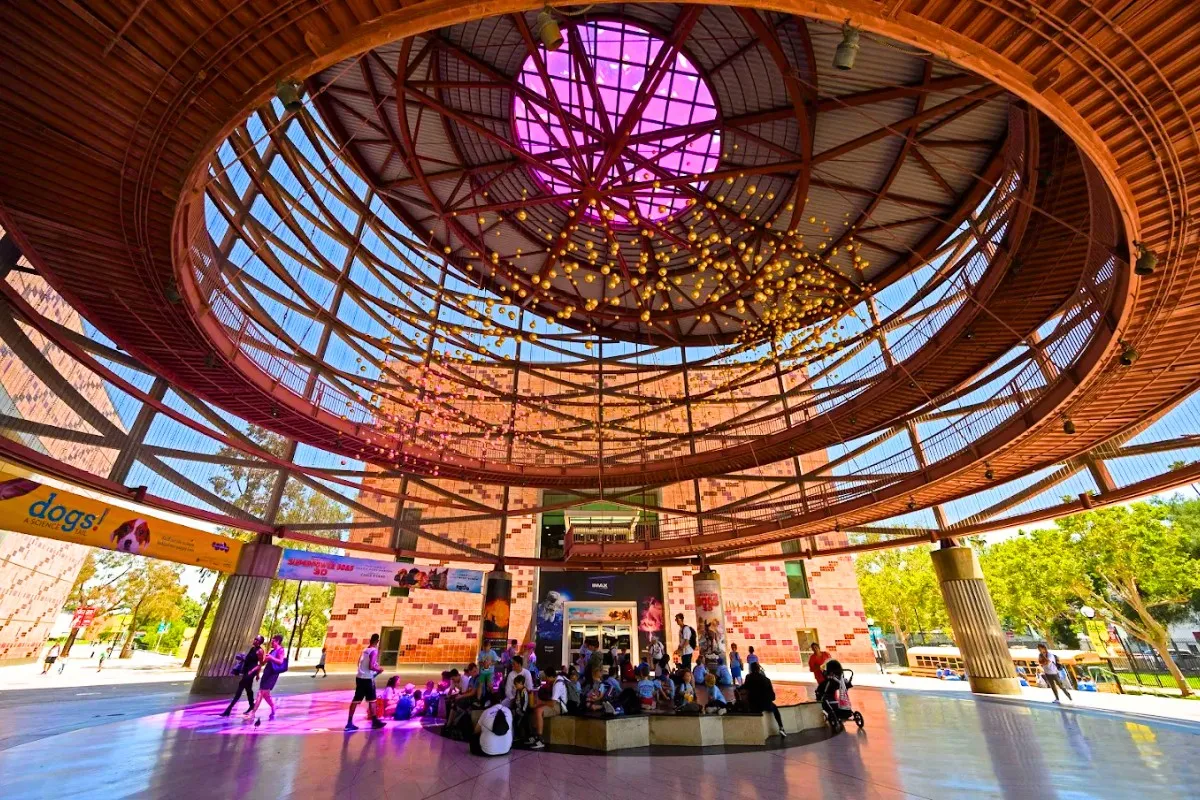Planning a trip to Los Angeles and looking for a destination that is both educational and fun for the whole family? Don’t miss the opportunity to explore the California Science Center, an exciting place with countless wonders waiting for you to discover. With unique interactive exhibits and diverse educational activities, the California Science Center promises to bring you memorable moments and valuable knowledge.
So, how can you have a complete and meaningful visit to the California Science Center? Let’s explore the secrets and useful information right here!
Overview of the California Science Center
The California Science Center is one of the leading science museums in the United States, attracting millions of visitors each year. It is not just a museum, but also a science education center where people of all ages can explore and learn about the world around them through interactive exhibits, educational programs, and special events.
One of the most prominent highlights of the California Science Center is the Space Shuttle Endeavour, a symbol of the US aerospace industry. In addition, the museum has many other fascinating exhibition areas, including Ecosystems, Creative World, World of Life, and Air and Space Exhibits.
Getting to the California Science Center
Getting to the California Science Center is quite easy thanks to Los Angeles’ developed public transportation system. Here are some popular options:
- Metro Rail (Metro): The Metro Expo Line is a convenient and fast choice. Just get off at the Expo Park/USC station, and the museum is nearby.
- Bus: Many bus routes stop near the museum, including routes 30, 81, Metro Rapid 730, and the Silver Line.
- Car: If you drive, you can park at the museum’s parking lot for a fee of about $15/day. However, the parking lot can fill up quickly on weekends or holidays, so you should arrive early.

Must-See Exhibits at the California Science Center
The California Science Center has many fascinating exhibits, suitable for all ages and interests. Here are a few suggestions you shouldn’t miss:
Space Shuttle Endeavour
This is definitely the highlight of the museum. You will have the opportunity to see the legendary Space Shuttle Endeavour up close, one of NASA’s most successful space shuttles. This exhibit not only provides a close-up view of the magnificent spacecraft, but also tells the extraordinary stories of astronauts and their contributions to science and technology.
Ecosystems
This exhibit takes you on a journey to explore diverse ecosystems on Earth, from tropical rainforests to arid deserts and the deep ocean. You will learn about the interactions between living organisms and their habitats, as well as the challenges that ecosystems are facing.
Creative World
This exhibit focuses on inventions and technologies, from simple tools to complex systems. You will discover how engineers and scientists solve real-world problems, as well as the impact of technology on society and the environment.
World of Life
This exhibit explores the world of life, from the cellular level to complex body systems. You will learn about the structure and function of the human body, as well as basic biological processes such as reproduction, genetics, and evolution.
Air and Space Exhibits
In addition to the Space Shuttle Endeavour, this exhibit also features many other artifacts and models related to the aerospace field. You will learn about the history of aviation, the basic principles of flight physics, as well as the challenges and opportunities in space exploration.
Suggested Itinerary
To have an effective visit and not miss the most attractive spots, you can refer to the following suggested itinerary:
- Morning: Arrive at the museum early to avoid crowds and have enough time to explore the Space Shuttle Endeavour. Then, you can visit Ecosystems or Creative World.
- Afternoon: Spend time exploring World of Life and Air and Space Exhibits. If you have time left, you can participate in one of the educational programs or watch a movie at the museum’s IMAX theater.

Helpful Visiting Tips
- Buy tickets online: To save time and avoid queuing, you should buy tickets online before coming to the museum.
- Check the schedule: The museum often has special events, educational programs, and varying opening hours. Check the schedule on the museum’s website before you go so you don’t miss out on exciting activities.
- Wear comfortable shoes: You will have to walk quite a bit in the museum, so choose comfortable shoes to avoid foot fatigue.
- Bring water and snacks: The museum has dining areas, but prices can be a bit high. You can bring your own water and snacks to save money.
- Use the map and mobile app: The museum has maps and a mobile app to help you easily navigate and find information about the exhibits.
Combine Visits to Nearby Attractions
The California Science Center is located in Exposition Park, which has many other attractive destinations. You can combine your visit with the Natural History Museum of Los Angeles County, the Exposition Park Rose Garden, or the USC Fisher Museum of Art for a complete day of exploration.
Conclusion
The California Science Center is an ideal destination for those who love science, technology, and discovery. With unique interactive exhibits and diverse educational activities, the museum promises to bring you exciting experiences and valuable knowledge. Hopefully, the information and visiting tips in this article will help you have a truly complete and meaningful trip. Are you ready to explore the amazing world of science at the California Science Center?